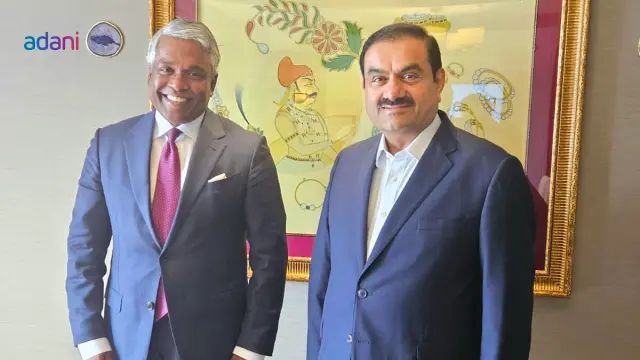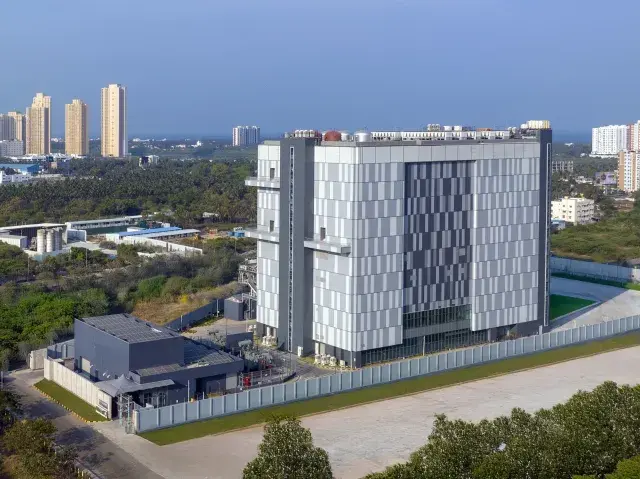-
5.9 Magnitude Earthquake Strikes Japan Today: What We Know - 11 mins ago
-
Republicans Who Have Rarely Opposed Trump Raise Questions About His Drug War - 21 mins ago
-
Justice Department says it will monitor California poll sites amid Prop. 50 voting - 46 mins ago
-
List of Tariffs Ronald Reagan Implemented as Trump Cancels Canada Talks - 46 mins ago
-
Hakeem Jeffries Gives Mamdani Last-Minute Endorsement for N.Y.C. Mayor - about 1 hour ago
-
College Football Fans Rank Surprise Stadium No 1 - about 1 hour ago
-
Ex-LAPD officer indicted for murder in on-duty killing of homeless man - about 1 hour ago
-
2 People Shot at Protest Site Outside Coast Guard Base in California - 2 hours ago
-
Turkey Prices Soar Before Thanksgiving - 2 hours ago
-
FSU’s Mike Norvell Issues Serious Warning to Team Amid Calls for his Firing - 3 hours ago
India’s $70 Billion Energy Engine Behind $15 Billion AI Leap
When Prime Minister Narendra Modi declared that India must “lead the world in the responsible use of artificial intelligence and build the infrastructure that powers it,” many saw it as a distant ambition. Today, that vision is taking shape on the Bay of Bengal.
In Visakhapatnam, the Adani Group and Google Cloud are constructing a massive $15 billion AI data center campus, the largest outside the United States. For a nation long viewed as a consumer of global technology, this project marks a turning point. India is now building the infrastructure that could one day power the world’s digital intelligence.
In a post celebrating the initiative, on X, Modi said he “welcomed Google’s commitment to invest in India’s AI future and to help make Digital India a global force for innovation and inclusion.”
That statement now reads like prophecy in motion.
The early intent of the Adani Group was visible. In 2021, Gautam Adani identified that data centers would create “infinite energy demand”, pinpointing clean energy as the primary bottleneck. In 2022, Adani Green Energy committed over $70 billion to clean energy, planning “energy-to-compute” corridors. The strategy operationalized in 2023 with the AdaniConneX joint venture, targeting 1 GW of data-center capacity, and the launch of Adani AI Labs. In 2024, the acquisition of Coredge laid the groundwork for a sovereign cloud. By 2025, this culminated in the $15 billion Adani-Google AI Data-Centre Campus and Adani’s “infrastructure of intelligence” thesis, which he termed India’s “second freedom struggle”.

His group then set out to build that foundation. Over four years, the Adani Group committed $70 billion to renewable energy, solar, wind, and energy storage. Those assets now power what Adani calls “the infrastructure of intelligence.” Unlike most data-center players who rely on purchased power, Adani designed an “energy-to-compute” ecosystem, linking green energy generation, fiber connectivity, ports, data centers, and sovereign cloud networks. The Visakhapatnam project is its boldest expression.
For Google, the partnership offers a rare chance to deploy its full AI stack in one of the world’s fastest-growing digital markets. “Our AI hub in Visakhapatnam will bring Google’s full AI stack to India; from infrastructure and research to consumer services,” Google Cloud’s communications team shared in a statement with Newsweek. “This investment will empower businesses, developers, and citizens to harness AI responsibly and securely.”
Sundar Pichai underlined this after meeting Modi earlier this year, saying Google was “excited to support India’s AI mission by building advanced infrastructure and developing talent for the next decade.”
For Thomas Kurien, CEO of AdaniConneX, the venture represents more than a business deal. “For India to become a true digital powerhouse, it must have its own world-class AI infrastructure,” Kurien told Newsweek. “This partnership combines Google’s AI capabilities with Adani’s data-center, energy, and infrastructure expertise to create a foundation for India’s digital self-reliance,” he added.

Data, Sovereignty, and the Future
India’s AI market is expanding from $1 billion in 2024 to an estimated $8 billion by 2030, growing at more than 40 percent annually. The new Visakhapatnam campus will host 1 gigawatt of compute capacity, powered entirely by renewable energy from Adani’s Khavda Renewable Park in Gujarat, the largest solar and wind installation on Earth.
Kurien explained that the challenge was not vision but coordination. “Executing a multi-gigawatt AI infrastructure requires revamping entire supply chains; land, energy, construction, talent. Synchronizing all these components into one optimized system is what we do best.”
The project has drawn rare political alignment. At a recent forum in Visakhapatnam, Indian IT Minister Ashwini Vaishnaw, Finance Minister Nirmala Sitharaman, and the state of Andhra Pradesh Chief Minister N. Chandrababu Naidu described it as a landmark moment for India’s economy.
Vaishnaw called it “a cornerstone of the IndiaAI Mission.” Sitharaman noted that it will “generate tens of thousands of high-skill jobs and secure India’s place in the global AI supply chain.” Naidu said it “cements Andhra Pradesh’s place on the global technology map.”
Data, Sovereignty, and the Future
India already produces more than 8 exabytes of data every day, and that number is growing fast. With data-localization rules tightening, AdaniConneX’s acquisition of Coredge.io enables AI workloads to be stored and processed entirely within Indian borders. Kurien told Newsweek that the real impact lies in accessibility. “The mission is to make cutting-edge AI tools and computing power accessible and affordable to all. This will empower a new generation of Indian startups, researchers, and enterprises to compete globally.”
The Foundation of a Digital Century
The scale of the project is staggering, but what it represents may be even larger. Few nations have attempted to align government vision, private capital, and sustainable energy at this magnitude.
It is not a Silicon Valley story or a Beijing story. It is a story from Visakhapatnam; a city where India’s digital dream is meeting industrial muscle.
As Gautam Adani once put it, “If India’s AI revolution is a skyscraper, we are building its foundation.”




















